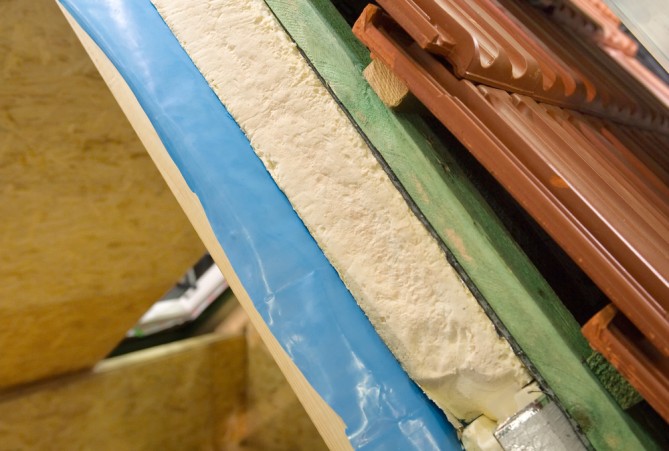


A damp-proof membrane is a moisture-inhibiting foil that is 100% watertight (unlike a breather membrane!). Thus damp – which exists in the surrounding air in the form of condensation – is prevented from penetrating the membrane.
A damp-proof membrane is required when using certain insulation materials – such as mineral wool, cellulose, etc. - to prevent damp from working its way into the insulation. Where insulation is concerned, fitting a damp-proof membrane is important, as it safeguards the insulating properties of the material.
The membrane is also used to protect building structures against damp. For a timber structure, the damp-proof membrane offers protection against rot and mould.
Damp-proof membranes come in different forms.
A damp-proof membrane is especially advisable for roofs that have a low-water-permeable course. This holds true for most roof frames of sloping roofs and platform roofs. In addition, a damp-proof membrane is a good idea in poorly ventilated kitchens and bathrooms and for exterior walls that do not allow a lot of damp to get through, such as walls built with glazed bricks.
If you are in doubt as to the need of a damp-proof membrane, the best thing to do is to play it safe. The cost of a damp-proof membrane is negligible, but it will help to save your investment in the protective materials.
Installing a damp-proof membrane is not a specialist job. But it does require care and attention.
If the damp-proof membrane is meant to protect insulation material, make sure it is always fitted underneath the insulation material. This is the only way that it will block humid air (inside your home) before it reaches a cold area when this damp air will condensate.
The damp-proof membrane only does what it is supposed to do if it has been fitted perfectly.
When fitting a DPM, always make sure:
A breather membrane is placed on the cold side of the wall insulation (outer side of the construction) in order to prevent humidity from entering the building without reducing the insulating effect.
Unlike a vapour barrier, breather membranes are vapour permeable which will help evacuate indoor humidity.
Subscribe to our newsletter and stay informed about energyfacts.